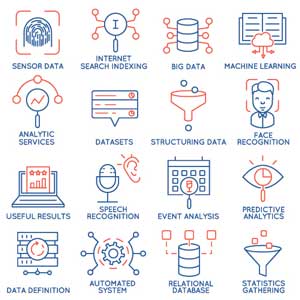In the earlier article, it was explained that the Business Intelligence initiative should be aligned with business problems, the existing IT landscape should be taken into consideration with clear roles along with selecting a competent BI vendor and finally, a BI roadmap should be developed in order to identify approach, a platform and required budget and infrastructure.
Selecting the right BI platform can be a daunting task when so many Business Intelligence platforms claiming to be the best in the business; moving constantly (up, down, right and left) on Gartner’s magic quadrant.
But what may be good for one firm may not suit another, to make the selection process easier these are the critical capabilities or factors you may need to consider.
1. Data:
What type of data resides in your organization’s treasure chest(s)? How much of it is there? How much of it is actually useful? How fast would it grow? What’s the current state and How many different sources of data are there? What’s readiness? And most importantly How would that data be utilized or add value?

Without a data management framework and a data governance policy; the answers to the above-mentioned questions are not easy to produce. Embarking on an implementation journey without considering the above can result in failures of epic proportions. For instance, an inexpensive dashboarding tool may attract you at first but its inability to process large datasets may slow down the performance of generating reports. This in real life means a frustrated end-user going back to spreadsheets for generating numbers and analysis quickly “the way they used to”. The jump back to “the way they used to” boat is a killer for any new initiative.
Understanding these characteristics of business data shall help you decide whether you need a data warehouse or a Big data platform or maybe both. Whether to keep it on-premise or host it on a cloud or maybe both. Single platform with all-in-one functions such as storage, ETL and analysis interface or multiple tools to perform each function.
Would the BI component of the existing ERP suite work better or should you go for a different BI platform altogether? Would a simple dashboarding tool do for now or an enterprise platform is essential?
2. Business Needs:
A BI platform that suites the existing and upcoming business needs is the way to go. What KPIs or metrics are currently used by business? Would the business need mobility? How many data consumers and analysts are there? Self-service analysis capability required? Would it be able to perform advanced analytics (i.e. machine

learning / AI etc.) What kind of security measure shall be in place? And most importantly how would it add value to the business, provide a single version of the truth and augment the decision-making capabilities of executives.
BI platforms are not designed for specific businesses although industry-ready solutions are available out-of-the-box. With some customization, it may take the firm to the promised land. To maximize profitability, it is difficult for firms to dole out a huge chunk of money, hence alternatives can be considered.
Businesses always look to replicate the success of others, most of the time within the industry. Remember what may work for your competitor may or may not work for you. Consideration can be given to the existing skill set of the workforce and readiness to change.
3. Cost:
What’s the license cost? Is it perpetual or annual? How much would the support cost? What’s the investment on hardware? How much would the vendor services cost? Are there affordable human resources available in the

market? Would on-premise be more expensive or cloud more feasible?
A must deliberation is required for the type of purchase or license model that suits the organization. Considering cost alone, many enterprises opt for open source tools, only to realize later on that there is no support available or the unicorns that have the ability to develop wonders on these tools; are rare, difficult to hire and retain. Especially if there is a lack of direction, no alignment with business or data that can be analyzed easily by a few clicks (using a different BI tool) is processed after writing a hundred lines of code every time there is a new business need.
4. Market:
Categorized broadly, Business Intelligence platforms can be of four categories (for the sake of argument); The elephants, The Rhinos, The Horses and The Ponies. These are by no means the industry nomenclature, but for candor lets categorize them like this.
The elephant in the room is of course HADOOP or Big Data. Comparatively less expensive than the rest, Big Data got everyone talking a few years back. Before having the elephant as the preferred pet, it is suggested that four V’s of Big Data (velocity, veracity, variety, volume) must be considered. Keeping the elephant might feel good at first but the upkeep and extracting value out of it can be difficult and expensive.
The Rhinos are those who developed ERPs / CRMs for a living, with the boom of decision support systems, decided to offer the Business Intelligence layer on top of an already implemented application. Rhinos are catching up to horses, but horses are beautiful yet fast and agile.
Horses are the companies that developed their own Business Intelligence platforms. Specialized to do all that a BI tool is supposed to do, the rest of the industry tries to emulate them.
While ponies, although beautiful, are not fast or strong as horses, these are dashboarding tools that cannot process once the weight of a data set exceeds its capacity. In other words, can only carry children on short rides.
Then there are a host of ETL tools and databases to choose from for data warehousing purposes but let’s keep that discussion for another day.

When selecting out of these four; consideration must be given to all four factors.
Furthermore, trust the I.T. department or selected BI vendor to provide suggestions/proof of concepts and free trials of different platforms available in the market.
This is the second article in our series of articles related to analytics, you can find the earlier article here “Avoiding 80% Failure Rate in New BI & Analytics Projects”
Stay tuned for:
Algorithm-driven Business Strategy Optimization.
How to Create the Right Analytics Ecosystem
How to Select the Right AI Toolset
